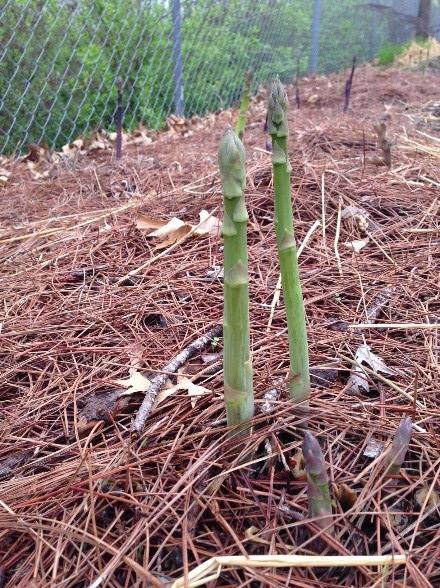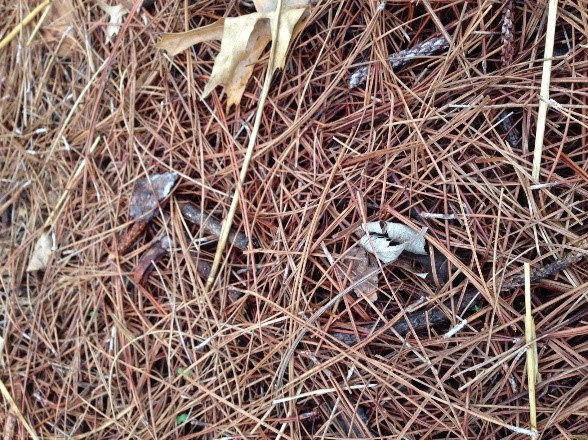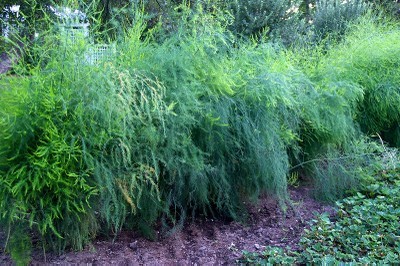What Do All These Terms Mean?
When it
comes to vegetable seeds and plants, there are a few terms that get used a lot:
open-pollinated, heirloom, hybrid, organic and genetically modified. They all
sound important, but what do they really mean? Here’s a quick explanation.
Open-pollinated – First, an explanation of
pollination. Pollination is the process that plants use to reproduce. Pollen
from the flower of one plant gets transferred to the flower of another plant
and seeds are formed. This transfer of pollen typically occurs by insects,
animals or wind. In this process, the genetic information of one parent (the
producer of the pollen) gets blended with the genetic information of the other
parent (the recipient of the pollen) and a similar, but genetically different
offspring is the result in seed that is formed. This mixing of genetic
information is a natural process and allows for the diversity that we naturally
find within a plant species.
When it
comes to the vegetables grow, open-pollinated varieties refer to unique breeding
lines within a species. These breeding lines develop over time. Crops are
planted and weak plants or those that don’t display characteristics that
resemble the others are eliminated. The remaining plants are allowed to
pollinate openly with each other, seed is collected and then saved. The next
year the same thing happens and again and again, year after year. Eventually
through this repetitive process, the natural variation within this variety
begins to disappear and the blood-line becomes more stable, but since it is
still open-pollinated, it still containing some genetic diversity which is
good. In a true open-pollinated variety, seed saved from one crop can be used
to plant a new one and the new one will have the same genetic characteristics
as the parent crop. Open-pollinated varieties only remain genetically true only
if they are not allowed to cross with other varieties.

Heirloom – These are open-pollinated
varieties that have been around for a long time, 50 to 100 years or even more.
These breeding lines have been typically been passed down within a family or
community. All heirloom varieties are open-pollinated, but not all
open-pollinated varieties are heirlooms…only the real old ones.
Hybrid – All plant varieties are
technically hybrids, or the result of the blending of the genetic information
(pollen) of two different parents. But when talking about vegetable varieties,
the term hybrid usually refers to the offspring of two different species or two
distinctly different blood-lines. For example, if two different heirloom
varieties are planted side by side and allowed to open-pollinate with each
other, the seeds that they produce would be a hybrid, or a blending to the two
breeding lines.
Although
hybridization can occur naturally, commercially hybridized seed is bred through
a controlled process to create the desired results. Parent plants are carefully
selected based on plant characteristics like fruit size or disease resistance and
other pollen sources are eliminated, allowing for controlled pollination. If
the plant breeder has found the right combination of parents to produce a
desirable variety, this new hybrid gets goes into commercial production and hybrid
seed is produced. It this hybrid occurs by crossing two true breeding lines,
the result is called an F1 hybrid.
It is
important to note that although hybrid varieties produce plants with known
characteristics, the seeds that they produce will not. Because of the genetic
mixing that takes place in your garden when natural pollination is allowed to
occur, seeds produced from a commercial hybrid that you have planted will not
come true to type. Therefore, replanting of this variety from year to year
requires the purchase of new seed from the supplier who does the hybridizing.
Genetically Modified – For this plant discussion,
genetically modified organisms, or GMOs, are plant varieties that have been
created in the laboratory by introducing very specific genes into the genetic
material of the new variety. These genes would not typically cross into the
plant naturally and may come from vastly different organisms.
GMOs have
been around since the 1980’s and are now widely found in commercially grown
crops like corn, soybeans and cotton. It is expensive technology and the GMO
varieties and the genetics they contain are tightly controlled by the companies
that own them. While there is a lot of controversy surrounding them, it is
important to note that they are only available to commercial farmers under very
specific contractual controls. GMO seeds are
not available to homeowners in retail stores.
Organic – Seed that is labeled organic has
been produced through organic gardening practices. When growing vegetables,
organic usually means producing crops without the use of commercial pesticides
and fertilizers.
Many
gardeners choose to grow their crops organically or as organically as they can.
Some of those folks feel that to truly grow organically, the seeds that are
planted must also be produced organically. Others disagree, feeling that as
long as the crop is grown organically, it doesn’t matter how the seed was
grown. Unless you are planning on growing commercially and achieving an Organic
Certification for your garden, the choice is yours.
Hopefully that helps. If you find still find
yourself confused by all the terminology, come on out and ask us your
questions. We’ll try to help clear things up.


 Choosing a Location -
Because your plants will be growing in the same place for up to 20
years, you should think about how your planting will impact your
existing garden as well as your future landscape plans. It takes a
couple of seasons to get your new plants up to full production, so you
don’t want to have to remove them because of bad planning. Asparagus
plants will grow up to about 4-6’ tall and almost as wide. Give them
some room and site them correctly. You will be happy you did.
Choosing a Location -
Because your plants will be growing in the same place for up to 20
years, you should think about how your planting will impact your
existing garden as well as your future landscape plans. It takes a
couple of seasons to get your new plants up to full production, so you
don’t want to have to remove them because of bad planning. Asparagus
plants will grow up to about 4-6’ tall and almost as wide. Give them
some room and site them correctly. You will be happy you did. sugar content up to 20% higher than green varieties. It does produces
fewer spears, but they will be much larger in diameter, making up for
the difference. Because they produce fewer spears, this variety could be
planted a little closer together, as close as 8-12”. This is our 2nd
most popular variety.
sugar content up to 20% higher than green varieties. It does produces
fewer spears, but they will be much larger in diameter, making up for
the difference. Because they produce fewer spears, this variety could be
planted a little closer together, as close as 8-12”. This is our 2nd
most popular variety.  Mulch Your Plants -
Once your crowns have been fully backfilled, top-dress the whole area
with compost (about 1” deep) and then mulch to control weeds with
Alfalfa Mulch or Pine Straw Mulch. Mulching will improve the yield in
future years by eliminating a lot of annoying weed growth. It will also
make your planting look nicer and as an added plus, it will provide a
clean surface to walk on during the spring harvest when the soil can
often be wet and muddy.
Mulch Your Plants -
Once your crowns have been fully backfilled, top-dress the whole area
with compost (about 1” deep) and then mulch to control weeds with
Alfalfa Mulch or Pine Straw Mulch. Mulching will improve the yield in
future years by eliminating a lot of annoying weed growth. It will also
make your planting look nicer and as an added plus, it will provide a
clean surface to walk on during the spring harvest when the soil can
often be wet and muddy.
 What should you mulch? Everything. When should you mulch? Every time
you plant. We know that anytime you spend time, energy and money to
improve your yard and garden you are making an investment. Protect your
investment and give it the best chance of success by mulching regularly.
If you have questions about our mulch options, please come visit us in
the garden center!
What should you mulch? Everything. When should you mulch? Every time
you plant. We know that anytime you spend time, energy and money to
improve your yard and garden you are making an investment. Protect your
investment and give it the best chance of success by mulching regularly.
If you have questions about our mulch options, please come visit us in
the garden center! One of the easiest to grow spring vegetable crops is onions. Plant them now while the weather is cool and before long you'll be enjoying your first harvest of green onions and the big onions will only be a few months away.
One of the easiest to grow spring vegetable crops is onions. Plant them now while the weather is cool and before long you'll be enjoying your first harvest of green onions and the big onions will only be a few months away. Most lawns benefit from an application of crabgrass preventer to help
Most lawns benefit from an application of crabgrass preventer to help prevent summer weeds from being a problem. You still have plenty of time to get your application down, but the sooner you get yours applied, they better.
prevent summer weeds from being a problem. You still have plenty of time to get your application down, but the sooner you get yours applied, they better.
